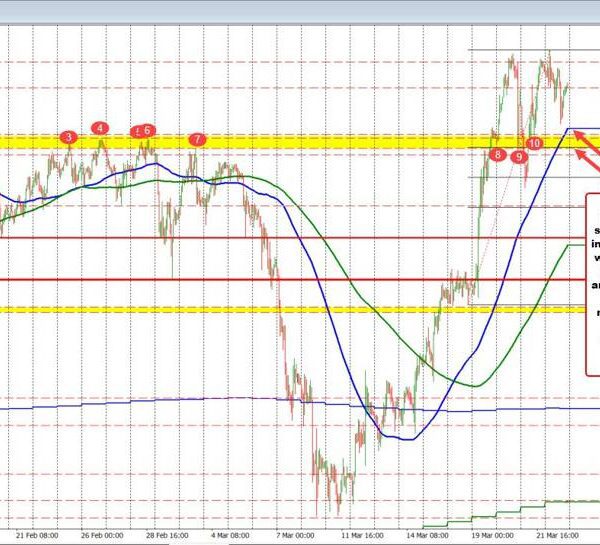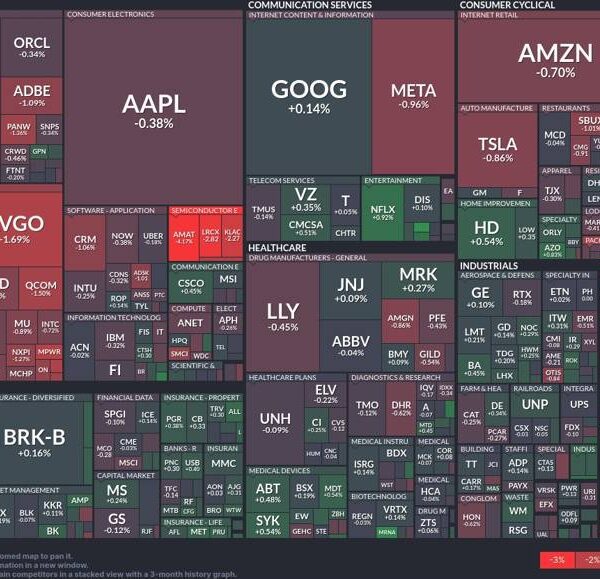

All eyes are fixed on the Federal Reserve this week. With inflation fading and the labor market showing signs of weakness, investors have been pricing in a string of market-juicing interest rate cuts, and the first is seemingly guaranteed to come after the Federal Open Market Committee (FOMC) meeting Wednesday.
As a result, Wall Street leaders are no longer debating if the Fed will cut rates, it’s all about by how much. Some argue that Fed officials will opt for a smaller 25 basis point rate cut, given the economy remains far from recession in most economists’ views. But others, including some Fed officials, have said that a 50 basis point rate cut is the best option to prevent the labor market from weakening further after years of elevated borrowing costs.
Steven Wieting, a prominent financial expert who wears many hats at Citi Wealth, serving as chief economist, chief investment strategist, and interim chief investment officer, sees a 25 basis point rate cut as the most likely outcome this week, but he emphasized that no one can know for sure.
“We’ve looked for 25, but certainly we would take 50…if they want to do this more quickly, they could,” he told Fortune, adding that “they could decide that, ‘hey, if we can be rapid on the way up, we can be rapid on the way down.’”
However, Wieting noted that the Fed’s “historical proclivity” is to cut by 25 basis points whenever they are merely realigning monetary policy with current economic conditions like they are this week, while larger rate cuts are typically reserved for periods when the economy is on the precipice of a recession.
“And that’s what’s really important here. The underlying context is we don’t believe the economy is at the cusp of a collapse,” he said. “But is [current] monetary policy going to interact and cause more of a slowdown than is needed? We think it will. That’s why there is a need [for the Fed] to act.”
Still, while investors have been focused on debating the size of the Fed’s September interest rate cut, Wieting argued that’s not the most important factor at play for markets.
“It’s really a tactical question. And it really won’t play much into where they’re ultimately going. And, certainly, it’s not telling us the condition of the economy, which is what everybody wants to know,” he said.
Wieting noted that since he is expecting 200 basis points of rate cuts (a two percentage point drop in the Fed funds rate) by the middle of 2025, the Fed’s decision to cut rates by 25 or 50 basis points at this meeting won’t be a game changer. Significant interest rate cuts are coming, it’s just a matter of timing, he predicted.
The prospect for ongoing, economy-boosting rate cuts means the tone of Powell’s testimony, and the Fed’s longer-term outlook for rates, will be more important than the near-term 25 or 50 basis point decision. Fed Chair Jerome Powell has proven his ability to move markets with a few words in the past, including after he said “the time has come” to cut rates at the Fed’s annual Jackson Hole symposium in August, leading stocks to a then-record high less than a week later.
“He was able to ease effectively at Jackson Hole—guide the rate path down, explain what the Federal Reserve is doing, and embed that impact in markets,” Wieting noted.
But while dovish comments from Powell that imply more future cuts could benefit stocks in the near-term, and hawkish comments could send them in the other direction, the economy and corporate earnings, rather than the Fed, will determine the path ahead for markets over the next year. Upcoming economic data—jobs reports, retail sales reports, and the like—will be critical.
“I think underlying economic conditions will be much more important to financial markets than the Fed’s tactics at a particular moment,” Wieting emphasized. “The possibility that we just shift around the timing of these cuts slightly…really doesn’t matter very much.”
However, Wieting did argue that investors’ shifting expectations for rate cuts could lead to increased volatility in the near term. “And that might be an issue,” he said.
The answer to volatility is ‘quality’—and maybe a little income
Most assets, including stocks and bonds, are extremely sensitive to rate cut expectations, which could lead to big shifts in trading volumes that can amplify price movements. For investors, Wieting recommended looking to “quality” stocks for outperformance during the upcoming, potentially volatile cutting cycle. These are companies that have strong balance sheets with low debt levels and consistent earnings that enable them to provide consistent returns even in trying times.
In particular, he argued that dividend aristocrats may outperform moving forward. S&P 500 companies that have raised their dividend for 25 consecutive years are given this title, which illustrates their ability to turn a consistent profit, and their willingness to return value to shareholders.
Dividend aristocrats have underperformed the S&P 500 this year, but Wieting noted they have a track record of outperformance that dates back decades, and are a good option for investors looking to dampen pending volatility.
“The strategy for uncertainty is [to] raise quality. If a firm is able to have the discipline to be able to raise its dividend every year, in some cases, for 25 straight years, it’s narrowing out the companies that have poor balance sheets. It’s actually narrowing out some riskier industries—cyclical capital intensive industries like autos, tend to fall out. That’s one strategy that has outperformed the market,” he said.
Wieting also pointed to the healthcare sector as a winning defensive play for investors, and argued that seeking some extra income through the bond market could make sense. Although bond yields have fallen from their peak, there are still many appealing options in fixed income for investors whose risk tolerance is a slightly lower.
“The pillars of investing are growth and income. Now, income has been significantly improved by the tightening cycle. Are we at peak bond income? No. But you can still, quite safely, build an income portfolio with a 5% yield,” Wieting said. “And what you do is you dampen your volatility for the risks you do want to take.”
While building defensive income in a portfolio might make sense, Wieting believes that there is actually less risk in U.S. stocks than there was at the start of this year, despite their rise. He noted that after big tech stocks drove much of the market’s rally in 2023, nine out of 11 sectors of the S&P 500 have seen rising earnings this year. This broadening of earnings growth, which continues today, is a sign that the economy is far from recession. Wieting is forecasting strong 9% year-over-year earnings per share growth for the S&P 500 in 2024.
‘The economy is not following the rules’
While many investors have been predicting an economic bust will wreak havoc on markets, Wieting doesn’t buy it. He argued that the U.S. economy has already experienced a rolling recession over the past few years—where some industries contract as others expand—which has made forecasting a challenge, and led to confusion among investors.
“There’s so many people out there with boom views and bust views, but there’s nothing V shaped here. It’s moving parts, it’s an economy that’s sort of in a recession in its manufacturing sector, in its housing sector, but we have very strong results for investment in technology and that’s ongoing,” he said. “It’s a more complicated story…the economy is not following the rules.”
Wieting noted that there are risks to markets in 2025, citing the election as an example, but he believes corporate earnings should continue to rise with the economy avoiding a true recession.
Although some investors are getting nervous with stocks trading near record highs while the labor market cools, he also emphasized that it always pays to remain invested. As the old saying goes: attempting to time market entries and exits is a fools’ errand.
“If you want to participate in economic development, those rising living standards, you have to participate with equity…I think you have to have some risk tolerance. Understand, you can decide how much drawdown risk you want to take in your portfolio, and have some safe assets and some growth assets—some income and growth. That sounds daunting, but one of the alternatives is that you’re going to lose most of your value to inflation, most of your wealth,” he warned.















